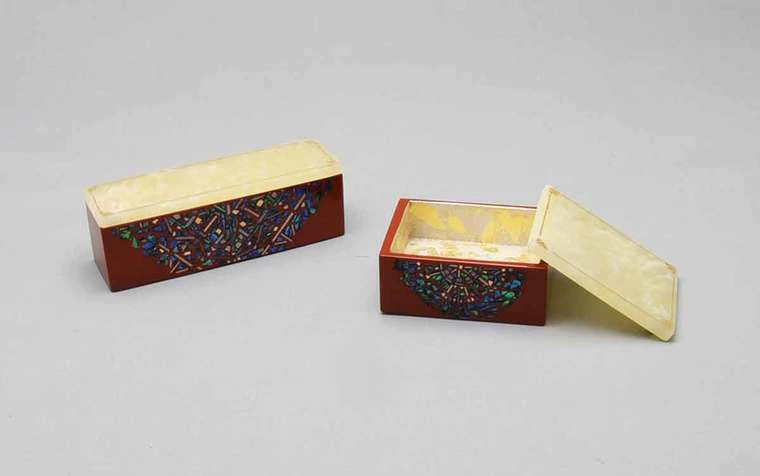The box with a southern design
H 3.5 x W 11 x D 3 cm,Year.2015Shimpei Matsuzaki
1981 -- Lacquerware
- Price Range Please Inquire
- Awards at Japan Kōgei Assoc. Exhibitions : 7
Description
-
CategoryLacquerware
-
MaterialsUrushi lacquer, Cypress, Shells, Gold powder, Silver powder, Pigments, Onyx
-
DimensionsH 3.5 x W 11 x D 3 cm
-
Year presented2015
-
Artist SignatureSigned (name of artwork, paulownia box)
Techniques Used
Maki-e
Maki-e (literally “sprinkled pictures”) is a representative lacquerware technique that originated in Japan around 1,200 years ago. Maki-e is done by painting lacquer motifs on the surface of a piece using a fine brush and then sprinkling gold powder onto the lacquer before it hardens, producing luxurious decorations.
Mother-of-pearl inlay (Raden)
Mother-of-pearl inlay (Raden) is a decorative technique that uses the iridescent inner layer of abalone shell, turban shell, pearl oyster shell, or other mollusk shells. The technique came to Japan from China 1,300 years ago, and pieces featuring mother-of-pearl inlay are included among the artifacts at the Shōsōin Repository in Nara.
Please feel free to contact us to commission work, check artworks available for purchase etc.

